Derwent Lightfast vs Faber-Castell Polychromos: Which Colored Pencils Are Better for You?
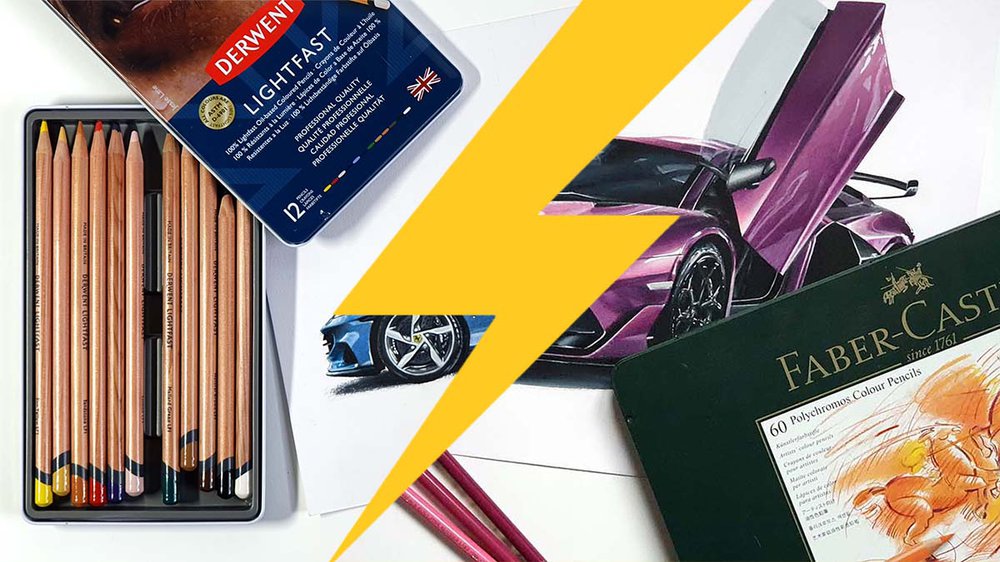
If you’re serious about colored pencil art—especially realism—you’ve probably come across both the Derwent Lightfast and Faber-Castell Polychromos pencils.
These are two of the most respected professional-grade pencil lines on the market, each with its own strengths.
I’ve been using the Polychromos since 2018, and they’re still my go-to pencils today. But when I discovered the Derwent Lightfast line a while back, I had to try them too—and I was genuinely impressed.
While both can produce stunning results, they offer different experiences in terms of blending, detailing, ease of use, and price.
In this comparison, I’ll break down the key differences and share what it’s like to actually use these pencils.
Whether you’re just getting into colored pencils or you’re looking to upgrade your tools, this guide will help you choose the right fit for your art style and budget.
Disclaimer: In the name of full transparency, please be aware that this blog post contains affiliate links and any purchases made through such links will result in a small commission for me (at no extra cost for you).
Quick Answer: Which Is Better? Derwent Lightfast or Polychromos?
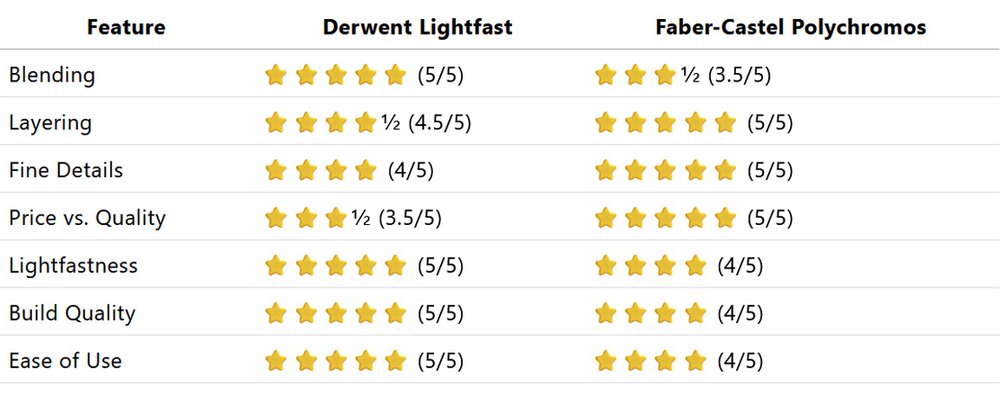
Both Derwent Lightfast and Faber-Castell Polychromos are excellent professional-grade colored pencils, but they shine in different areas.
Choose Derwent Lightfast if you want rich, creamy blending, a soft core that still holds a point, and maximum lightfastness. They're especially great for smooth color transitions and filling larger areas.
Choose Faber-Castell Polychromos if you want crisp, fine details, excellent layering, vibrant colors, and better value for money. They're ideal for precision work and more controlled techniques.
My pick? I use both, but Polychromos are still my go-to pencils for most drawings—mainly because of their versatility, durability, and price.
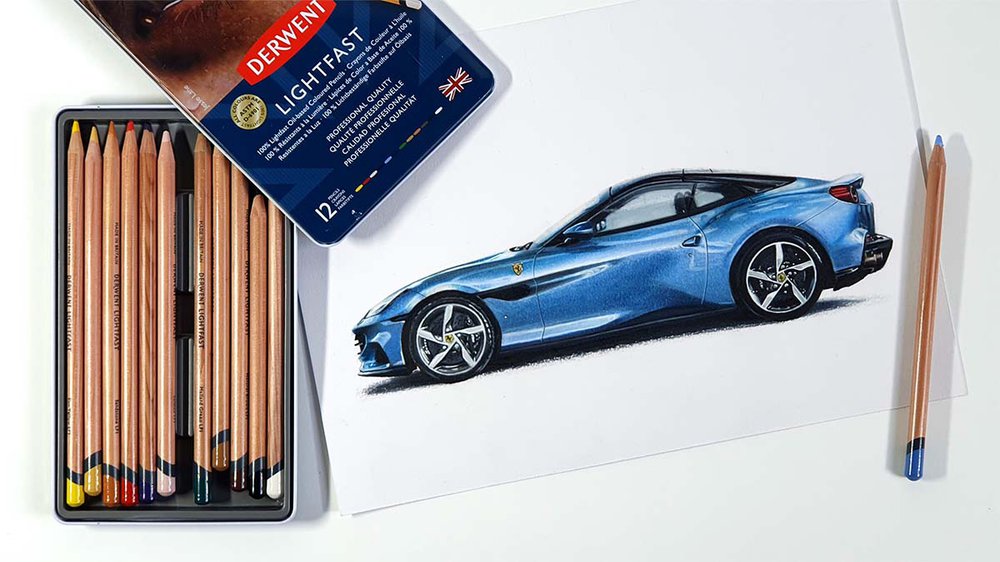
Derwent Lightfast Colored Pencils – Overview
The Derwent Lightfast pencils are Derwent’s top-tier professional line, made with 100% oil-based cores and a strong focus on lightfastness. I originally bought a small set of 12 pencils just to test them out — no particular reason other than curiosity — and they surprised me with how smooth, sturdy, and enjoyable they are to work with.
These pencils have a soft but balanced core that feels buttery when layering and blending, yet firm enough to hold a point and add details. They’re designed for artists who want their work to last, with nearly all pencils rated LFI (lightfastness rating I, the highest standard).
One thing I immediately noticed was how well-built these pencils are. The plain wood barrel with a dipped color end reminds me of the Caran d’Ache Luminance pencils — very clean, elegant, and comfortable to hold. Sharpening is smooth, and the leads have never broken on me, even when dropped.
While I don’t often create full pieces with just Derwent Lightfast, I mix them in regularly with other brands like Polychromos and Luminance. They blend beautifully and really shine when you take the time to layer gradually. Transitions can be super smooth and streak-free if you build up colors with some patience.
Key Features
- Oil-based core, soft but not mushy
- Excellent blending and layering, especially for smooth transitions
- Extremely lightfast (almost all colors are LFI)
- Thick 8mm barrel with plain wood design and dipped color end
- Strong core that resists breaking (even when dropped)
- Available in 100 colors with rich pigmentation
Pros
✅ Very smooth and easy to blend
✅ Can layer multiple colors without muddying
✅ Holds a point well for details despite soft core
✅ Great build quality — no breakage, easy to sharpen
✅ High lightfastness across the entire range
✅ Comfortable to hold for long drawing sessions
Cons
❌ Expensive — priced similarly or higher than Caran d’Ache Luminance
❌ Hard to correct or add more layers after burnishing
❌ Only 100 colors, which is smaller than some brands
Who Are They For?
Derwent Lightfast pencils are best for artists who care about longevity, build quality, and buttery blending. They’re especially great if you like working in layers and want smooth, vibrant gradients without visible pencil strokes.
They’re also ideal for anyone who finds softer pencils easier to work with but still wants enough control to draw detailed elements. That said, their premium price makes them a better fit for committed artists than for beginners just testing the waters.
If you're on a budget, you might want to start with a smaller set or mix them into your collection gradually. But if you have the money, the full 100-color range would be a dream to work with.

Faber-Castell Polychromos Colored Pencils – Overview
Faber-Castell Polychromos were the first artist-grade colored pencils I ever bought — and even after seven years, they’re still the ones I reach for most often. These pencils are incredibly reliable, with a harder oil-based core that makes them perfect for precise, controlled work and fine detail.
I use Polychromos pencils on fine grain paper, which suits their firmer core really well. While they don’t blend as quickly or as smoothly as softer pencils like the Derwent Lightfast or Caran d’Ache Luminance, they absolutely can blend beautifully if you have the patience to layer gradually. And the layering ability is one of their biggest strengths — you can build up a ton of pigment before the tooth of the paper fills.
The color range is fantastic, with 120 vibrant, pigmented shades. I usually mix brands in my drawings, but I use Polychromos the most simply because they’re so versatile and affordable compared to other professional brands. They're not perfect (I’m not a fan of how some of the lighter greys and pale colors lay down — a bit powdery and less vibrant), but overall, they're a workhorse pencil.
Key features
- Harder oil-based core, great for detail work
- Excellent layering potential
- Good blending with gradual application
- Painted barrel with glossy finish
- Wide range of 120 colors
- High pigmentation and vibrancy
- Lightfast ratings vary by color, but many are good
Pros
✅ Extremely good for fine details and precision
✅ Vibrant and rich color selection
✅ Great value — about half the price of Lightfast or Luminance
✅ Layers well without wax bloom
✅ Consistent, reliable performance
✅ Available open stock and in large sets
Cons
❌ Harder core makes blending slower and more effortful
❌ Some lighter colors and greys are less smooth/oily and feel a bit dry
❌ Painted barrel can get slippery with sweaty hands
❌ Slightly more fragile lead — can break if dropped or sharpened too aggressively
Who Are They For?
Faber-Castell Polychromos pencils are perfect for artists who love detail work, prefer firmer pencils, or are just starting out with professional-grade supplies. Their price makes them ideal for beginners or anyone building a large collection without spending a fortune.
They’re also a go-to for realism, especially where control and precision matter, like in technical shading or small, sharp highlights. If you're patient with layering, they’ll deliver smooth blends and vivid colors. While not quite as creamy or fast to blend as softer pencils, their precision and versatility make them a staple in any colored pencil setup.
If I had to pick just one set to keep, I'd stick with the Polychromos — they’re affordable, durable, and super capable.
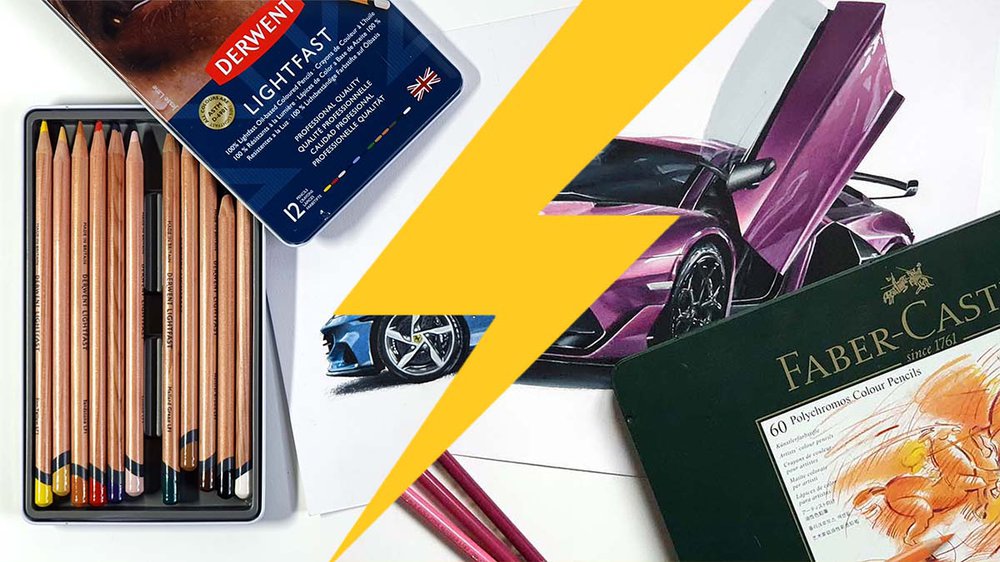
In-Depth Comparison: Derwent Lightfast vs Faber-Castell Polychromos
Both Derwent Lightfast and Faber-Castell Polychromos are professional-grade colored pencils, but they have very different strengths. Here's a closer look at how they compare across all the key features that matter when creating realistic, high-quality art.
1. Blending
Derwent Lightfast: 5/5
These pencils are super smooth and buttery. They blend effortlessly, especially if you take your time and layer gradually. It's really easy to create soft, streak-free transitions — even with minimal pressure.
Polychromos: 3.5/5
Blending is definitely possible, but it takes more effort and patience. You’ll need to build up layers slowly to get smooth transitions. Once you burnish, layering stops, so timing matters.
Lightfast wins here, especially for artists who love soft, painterly blends.
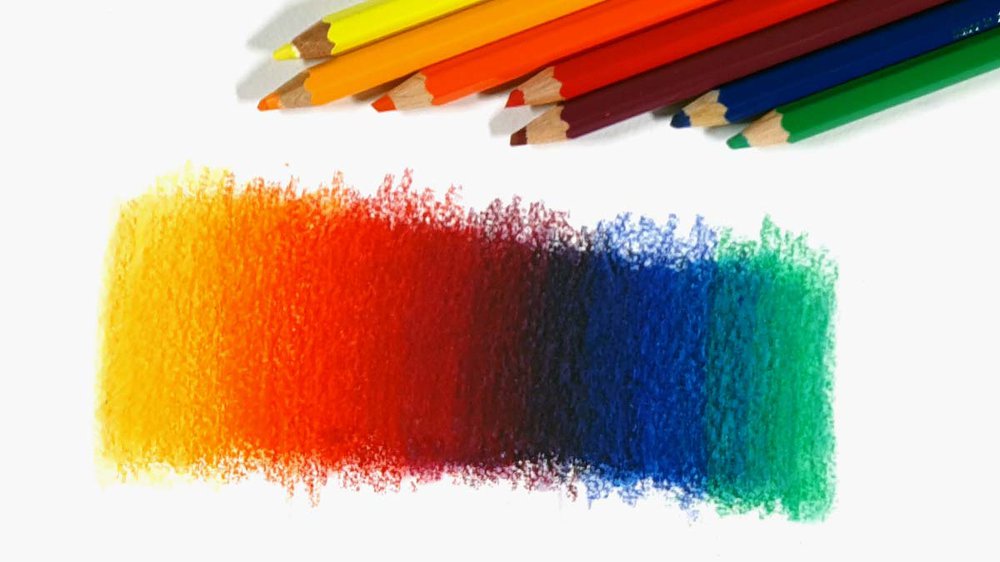
2. Layering
Derwent Lightfast: 4.5/5
Excellent layering ability. You can build up multiple colors smoothly, though after full burnishing, it's difficult to add more pigment. Still, layering before that point is smooth and controlled.
Polychromos: 5/5
One of the biggest strengths of Polychromos. They layer incredibly well and hold up even with a lot of pigment on the page. Because they’re oil-based, you get more control and less wax bloom.
Polychromos has the edge for layer-heavy techniques.
3. Fine Details
Derwent Lightfast: 4/5
The core is soft but still firm enough for details. It's a great balance — soft enough to feel smooth, but not so soft that the tip crumbles when sharpening.
Polychromos: 5/5
This is where Polychromos shine. Their harder core is perfect for precise, crisp lines and sharp edges. Ideal for technical detail or tight areas.
Polychromos clearly win for drawing fine details.
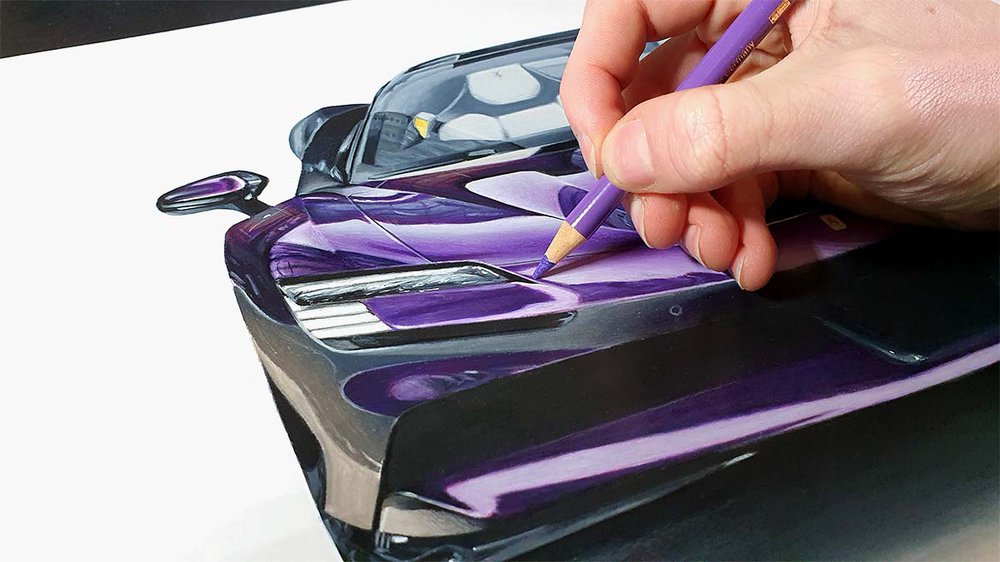
4. Price vs. Quality
Derwent Lightfast: 3.5/5
The quality is fantastic, but the price is steep, even more than Caran d’Ache Luminance in some cases. Not budget-friendly for beginners or large sets.
Polychromos: 5/5
Excellent value for money. These pencils perform at a high level and cost roughly half as much as the Lightfast or Luminance lines.
Polychromos offer better value, especially for building a large set.
5. Lightfastness
Derwent Lightfast: 5/5
As the name suggests, lightfastness is one of the main selling points. Every pencil in the range has a high lightfast rating (LFI or LFII). Great for archival work or selling art.
Polychromos: 4/5
Most colors are highly lightfast, but not all. Some lighter shades are a bit more prone to fading, so it's worth checking individual ratings.
Lightfast is more consistent across the entire range, but Polychromos still holds up well.

6. Build Quality
Derwent Lightfast: 5/5
Beautiful construction. The matte wood barrel is smooth, the core doesn’t break, and sharpening is effortless. Feels solid and premium in the hand.
Polychromos: 4/5
Still very high quality. The core is strong and rarely breaks, but it can happen if you're rough or drop them. The glossy barrel can feel slippery with sweaty hands.
Lightfast edges out slightly here for durability and comfort.
7. Ease of Use & Comfort
Derwent Lightfast: 5/5
Super comfortable to use. Thicker body, soft wood, and strong core make it a joy to work with for long periods. No need to baby these pencils.
Polychromos: 4/5
Still very comfortable, just a bit slimmer. The painted barrel might get slippery in warm weather or if you’re drawing for a long time.
Lightfast feels a bit more luxurious in-hand, but both are easy to use once you’re familiar with them.
Head-to-Head Comparison Table
| Feature | Derwent Lightfast | Faber-Castel Polychromos |
|---|---|---|
| Blending | ⭐⭐⭐⭐⭐ (5/5) | ⭐⭐⭐½ (3.5/5) |
| Layering | ⭐⭐⭐⭐½ (4.5/5) | ⭐⭐⭐⭐⭐ (5/5) |
| Fine Details | ⭐⭐⭐⭐ (4/5) | ⭐⭐⭐⭐⭐ (5/5) |
| Price vs. Quality | ⭐⭐⭐½ (3.5/5) | ⭐⭐⭐⭐⭐ (5/5) |
| Lightfastness | ⭐⭐⭐⭐⭐ (5/5) | ⭐⭐⭐⭐ (4/5) |
| Build Quality | ⭐⭐⭐⭐⭐ (5/5) | ⭐⭐⭐⭐ (4/5) |
| Ease of Use | ⭐⭐⭐⭐⭐ (5/5) | ⭐⭐⭐⭐ (4/5) |
Overall Thoughts
If you value detail, layering, and price, Polychromos are unbeatable.
If you want blending, comfort, and lightfastness, Derwent Lightfast takes the lead.
Both are excellent for realism, and both can fill large areas well, but in different ways. Lightfast is faster and smoother, while Polychromos is more methodical and precise.
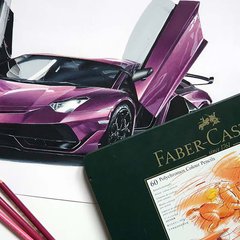
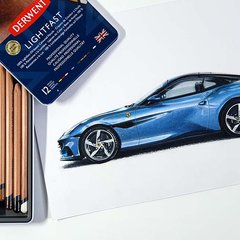

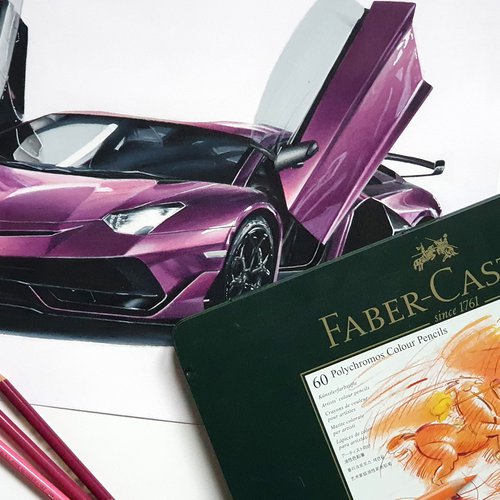

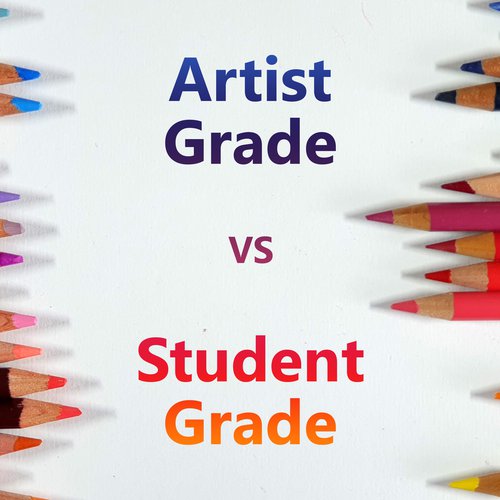
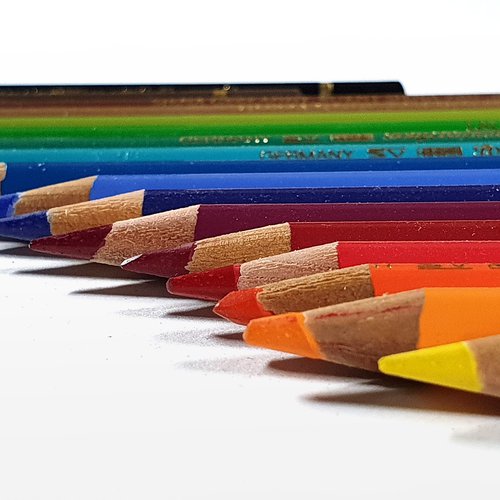


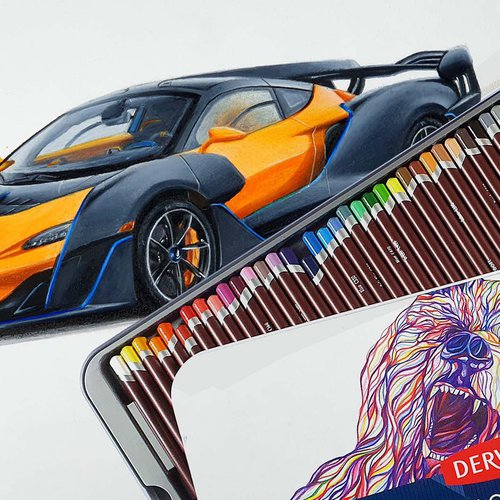
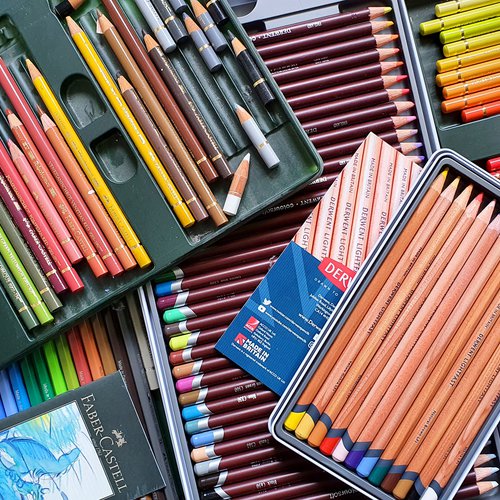




Be the first to comment!
Comments
There are no comments yet.